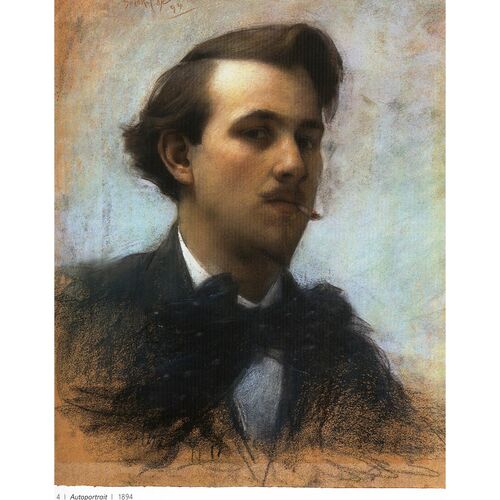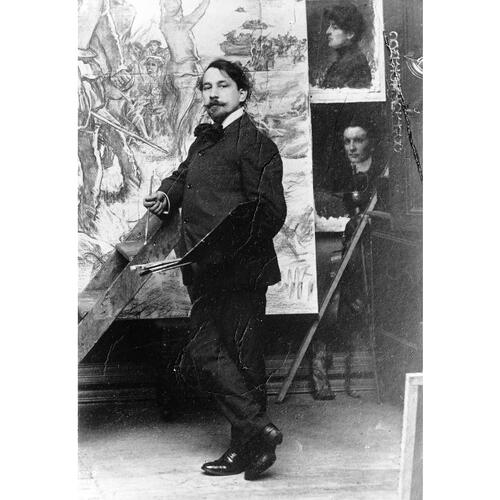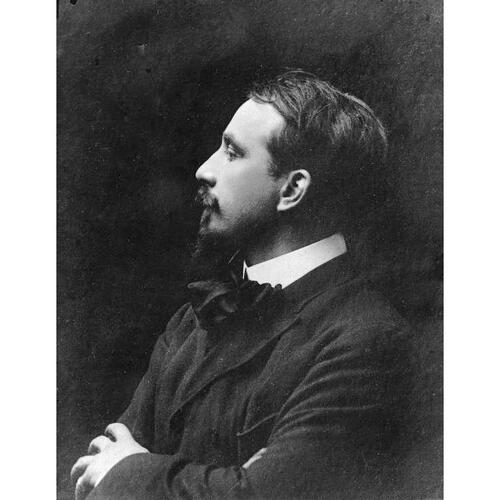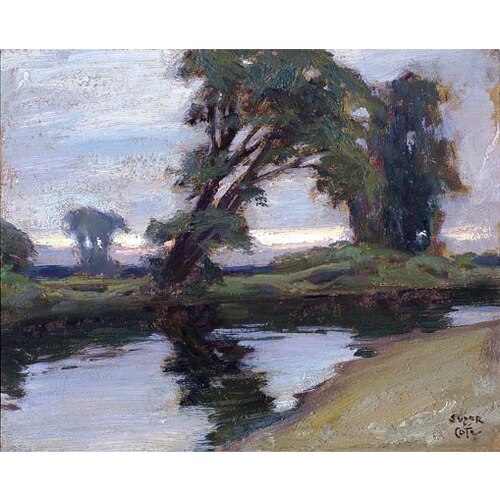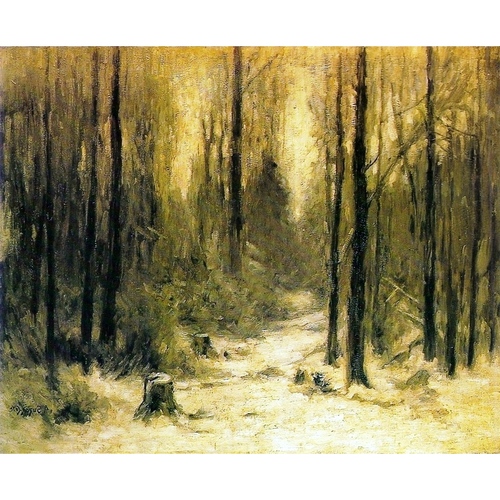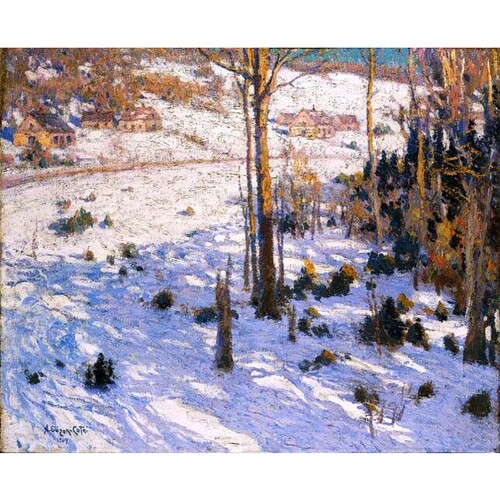![DescriptionMarc-Aurele de Foy Suzor-Cote - Autoportrait 1894.jpg English: Marc-Aurèle de Foy Suzor-Coté, Self portrait Français : Autoportrait de Marc-Aurèle de Foy Suzor-Coté Date 1894 Source [1] Author Marc-Aurèle de Foy Suzor-Coté (1869–1937) Description Canadian painter Date of birth/death 6 April 1869 29 January 1937 Location of birth/death Arthabaska, Quebec Daytona Beach, Florida Work location Arthabaska, Paris Authority control VIAF: 16428056 LCCN: n92106438 GND: 136122159 ULAN: 500032430 ISNI: 0000 0000 7372 9012 WorldCat
Original title: DescriptionMarc-Aurele de Foy Suzor-Cote - Autoportrait 1894.jpg English: Marc-Aurèle de Foy Suzor-Coté, Self portrait Français : Autoportrait de Marc-Aurèle de Foy Suzor-Coté Date 1894 Source [1] Author Marc-Aurèle de Foy Suzor-Coté (1869–1937) Description Canadian painter Date of birth/death 6 April 1869 29 January 1937 Location of birth/death Arthabaska, Quebec Daytona Beach, Florida Work location Arthabaska, Paris Authority control VIAF: 16428056 LCCN: n92106438 GND: 136122159 ULAN: 500032430 ISNI: 0000 0000 7372 9012 WorldCat](/bioimages/w600.11744.jpg)
Source: Courtesy of Wikimedia Commons
Suzor-Coté, Marc-Aurèle de Foy (baptized Hypolite-Wilfrid-Marcaurèle Côté, he used the first name and surname Marc-Aurèle Côté until about 1893), decorator, painter, sculptor, and illustrator; b. 6 April 1869 in Arthabaskaville (Victoriaville), Que., son of Théophile Côté, a notary, and Cécile Suzor; m. 28 Nov. 1933 Mathilde Savard in Daytona Beach, Fla; they had no children; d. there 29 Jan. 1937 and was buried 14 June in Arthabaska (Victoriaville), Que.
Marc-Aurèle Côté grew up in the village of Arthabaskaville in the Bois-Francs region, a place that had been recently settled but was already booming. The community was the administrative centre of the riding of Drummond and Arthabaska, its judicial and hospital centre as well as the site of the first business college of the Brothers of the Sacred Heart. At the time the village was home to the young Liberal mla and lawyer Wilfrid Laurier*, who was elected to the Legislative Assembly in 1871 and would count among his associates Philippe-Hypolite Côté, Marc-Aurèle’s brother. Following his studies at the Collège Commercial du Sacré-Cœur (from 1875 to about 1886), where he excelled in singing and the plastic arts, young Marc-Aurèle became assistant to the painter and decorator Joseph-Thomas Rousseau, who received commissions for decorations in the parish church of Saint-Christophe (1887–88), and the college chapel (1888, since destroyed). Drawn to painting, Côté accompanied his master to worksites at the church of Saint-Jacques-le-Mineur (1890, since destroyed) and churches in the parish of Sainte-Anne in Sorel (Sorel-Tracy) (1890–91).
This initial training reinforced Côté’s interest in art and his talent. One of his canvases, Anticipation, was even displayed in the windows of the Montreal Daily Star building in August 1890. His friend Joseph Saint-Charles, a painter, advised him to study in Paris, and the two of them left for the city in the spring of 1891. He enrolled at the Académie Colarossi and in July 1892 he was admitted to the atelier of Léon Bonnat at the École Nationale des Beaux-Arts. His interest in landscapes led him to pursue his training with Henri Harpignies and to make regular visits to the Cernay-la-Ville region, southwest of Paris. From 1892 he sent paintings to the spring exhibitions of the Art Association of Montreal, and in 1894 he showed his first works in Paris at the Salon de la Société des Artistes Français.
Around 1893 the artist added the names of his mother and maternal grandmother (de Foy) to his surname. From then on he would sign his works Suzor-Coté (without the circumflex). Ambitious and prolific, he took advantage of his contacts with the publishers of the newspaper in his native village, L’Union des Cantons de l’Est, to inform the public of all his movements and successes. The information, which was also circulated in France by the Parisian publication Paris-Canada, owned by Hector Fabre*, and taken up by the Montreal press, guaranteed him exposure and an introduction to the public.
Back in Canada in June 1894, Suzor-Coté built a studio in Arthabaskaville and rented a space in Montreal: he was thus able to work in both places and develop a market of collectors. The Liberal circle, with Laurier at its head, was loyal to him, and with the backing of this patronage, the young artist received commissions from Louis Lavergne and Gabrielle Lavergne (daughter of Émilie [Barthe*]), for example, and flattering reviews from critics such as Louis Fréchette* and Joséphine Dandurand [Marchand*].
In 1897 Suzor-Coté returned to Paris, where, this time, he was to remain until 1907, a stay interrupted by two visits to Quebec. He enrolled in the open academies of Julian and Colarossi, and also travelled to seek new subjects. He went to the Auvers region in Normandy, and then to Brittany, in particular to the village of Port-Blanc, as well as to the Basque country. It was during this second sojourn that he acquired the style for which he would become known, which combines a keen observation of variations in light, realistic drawing, a preference for bright, saturated colours, and a generous use of pigment. His paintings display some of the formal characteristics of post-Impressionism, applied, however, to rural subjects such as landscapes and genre scenes. Pastourelle – Vallangoujard (Seine-et-Oise) (1899), Le Retour des champs (1903), Port-Blanc en Bretagne (1906), and La Vallée de Senlisse (1906) demonstrate, in their way, the integration of the Barbizon School’s subjects and academic precepts (as shown in the work of Bonnat and Benjamin-Constant) into the art that was developing hard on the heels of Impressionism and became the accepted standard in France at the turn of the 20th century.
The painter was admitted to the highly regarded William Scott and Sons gallery in Montreal, which presented his works regularly between 1901 and 1912. Subsequently, the gallery of William Robinson Watson (Watson Art Galleries), among others, assumed this role. In 1905 Suzor-Coté started a large composition with a historical subject, Jacques Cartier rencontre les Indiens à Stadaconé, 1535, which he hoped to sell to the provincial government to decorate the provincial legislative building in Quebec City. When it was refused, he tried, in vain, through the intercession of Sir Wilfrid Laurier, who had become the prime minister of Canada, to have it purchased for Ottawa. The province of Quebec would acquire it only in 1923.
From 1907 to 1927 Suzor-Coté divided his time mostly between Arthabaska, where he found his subjects, and Montreal, where his clients lived. His career gained a firm footing around 1910, when the Canadian market opened up to him. He was admitted to the prestigious Canadian Art Club (1913) and became a member of the Royal Canadian Academy of Arts (1916). He exhibited regularly in Toronto and in several other Canadian cities.
On two occasions, in 1914 and 1925, specifically for his works Les fumées, port de Montréal and Les ombres qui passent, Rivière Nicolet, Suzor-Coté won the Jessie Dow prize awarded for the best painting shown at the Art Association of Montreal. His landscapes of snow and thawing rivers forged his reputation (Habitations sur la colline, Paysage d’hiver, 1909), as did his striking portraits of elderly farmers, including Esdras Cyr and Jean-Baptiste Cholette, who were painted several times. Suzor-Coté celebrated the meanderings of the Rivière Nicolet, which inspired compositions bathed in bright light, as well as the inhabitants of Arthabaska, the last representatives of a generation of local pioneers that was dying out. The painter used his own photographs and studies of his subjects to render his winter pieces, while his charcoal sketches were important stages in the production of the pastels and oils he executed of his aged sitters. From 1915 he broadened his repertoire and regularly exhibited nudes posing modestly in the studio or positioned in landscapes.
While studying in France, Suzor-Coté had been trained in sculpting, but, at the time, he used it as a means of creating small-scale settings of the subjects he wished to paint (La mort de Montcalm, 1902, for example). As soon as he returned to Canada, he developed this facet of his talent and produced some 50 works that were both expressive and stylized in form, some of which remain milestones in the history of Canadian sculpture. Specifically, Le vieux pionnier canadien (1912) and La compagne du vieux pionnier (1918), as well as Femmes de Caughnawaga (1924), were cast a number of times and are to be found in the collections of several museums. He also executed a statue of Louis Jolliet (1928), one of the historical figures decorating the facade of the provincial legislative building.
Suzor-Coté is credited with many projects that were inspired by his first occupation of decorator. They include the breakfast room (1908–9) of the Oak Ridge manor in Virginia owned by the wealthy businessman Thomas Fortune Ryan, two paintings (1909, since destroyed) for the ship Québec of the Richelieu and Ontario Navigation Company, and a painting for the church of the parish of Saint-Raphaël-Archange on Île Bizard (1920). He often incorporated allegorical elements into his landscape compositions (La source, 1915, and Symphonie pathétique, 1925), thereby giving them a symbolist dimension.
Such was Suzor-Coté’s Canadian reputation that Louvigny de Montigny*, a Senate translator, journalist, and author who wished to introduce people to the novel Maria Chapdelaine … by Louis Hémon* (published in serialized form in Paris), commissioned the artist in 1916 to produce 25 drawings to illustrate the first edition. Unfortunately, owing to the printing technique employed, the results were disappointing. Furthermore, in the hope of obtaining payment, the artist had to take the publisher to court. Suzor-Coté did no other illustrations, but several of his paintings would be reproduced in various works.
From 1919 Suzor-Coté rented a studio in the caretaker’s lodge that the sculptor Alfred Laliberté* had had built on Rue Sainte-Famille in Montreal, where numerous artists, including Joseph-Charles Franchère, Joseph Saint-Charles, and Frederick Simpson Coburn*, lived. There he was visited by Rodolphe Duguay*, who assisted him in producing replicas of his works that were then signed by the master (La bénédiction des érables, Le Sacré-Cœur de Jésus apparaissant à Marguerite-Marie Alacoque, 1920, for example). After suffering an attack of hemiplegia in 1927, Suzor-Coté settled in Daytona Beach in January 1929. Although he never recovered from the paralysis, he was happy there, travelling regularly to Cuba and resuming his work on a smaller scale. He married his nursing aide, Mathilde Savard, who accompanied him during his Florida stay.
In 1929 the School of Fine Arts of Montreal devoted a major retrospective of more than 150 works to Suzor-Coté, an exhibit that the artist helped organize from Florida. The selection drew largely from the numerous acquisitions the government had been making since 1920 with a view to assembling the collection of the province’s future museum. It would not open until 1933; Paul Rainville, a young compatriot from Arthabaska, became its assistant curator. When he died, Suzor-Coté left a studio filled with works that his wife and his brother Édouard were to sell off over the years, authenticating the paintings and drawings that had been left unsigned.
Contemporaries of Suzor-Coté remember him as extroverted, a man about town, haughty, boastful, and irreverent. He had produced a few self-portraits, in which he appeared, as he did in photographs, proud and dominating. He saw himself as a hard-working and enterprising person who took care of his appearance and respected social codes, while at the same time he was confident of his abilities as a storyteller, singer, and lively contributor to social encounters. His success did indeed rest on his talents, but also on his capacity for self-promotion, and without a doubt he had been his own best agent.
The career of Marc-Aurèle de Foy Suzor-Coté was remarkable in that it began in France, and after unfolding for 20 years in his own country, it ended in the United States. His œuvre is thus a distillation of the two dominant cultural influences in French Canada. Nevertheless, Suzor-Coté remained faithful to his native village and to values that might seem to be at odds with those espoused by Quebec’s rural areas, which, at the time, were embracing liberal ideology. This contradiction can also be found in his work, where he rendered traditional subjects in a contemporary style, and where he injected into Canadian visual culture a view of its topography, inhabitants, and history, subjects he handled with the vividness and luminosity of the modern French school.
The archival material of Marc-Aurèle de Foy Suzor-Coté has disappeared, with the exception of a small collection of objects, works of art, and photographs bequeathed by his brother Édouard and held at the Musée de la Civilisation (Québec) in the Coll. du Séminaire de Québec. Letters can be found in the fonds of Coté’s correspondents at: Arch. du Séminaire Saint-Joseph de Trois-Rivières (Québec), FN-0575; BANQ-CAM, MSS362; Centre de Recherche en Civilisation Canadienne-Française (Ottawa), P12; LAC, R10811-0-X; and Musée National des Beaux-Arts du Québec (Québec), Dossier Rainville, Paul, 1887–1952, and Dossier Simard, Charles-Joseph, 1877–1931.
The most complete collection of Suzor-Coté’s works (paintings, pastels, drawings, and sculptures) is held at the Musée National des Beaux-Arts du Québec. The National Gallery of Canada (Ottawa), the Musée Laurier (Victoriaville, Québec), the Musée de la Civilisation, the archevêché de Rimouski (Québec), and the Montreal Museum of Fine Arts also have a number of his works. In addition, the Art Gallery of Ontario (Toronto), the Musée d’Art de Joliette (Québec), the art collection of the Power Corporation of Canada, and the Art Gallery of Alberta (Edmonton) hold major works by the artist. The newspapers L’Union des Cantons de l’Est (Arthabaskaville [Victoriaville]), Paris-Canada (Paris), and Daytona Beach Morning Journal (Daytona Beach, Fla) are the main sources used to reconstruct the artist’s journey.
Arch. Nationales (Paris), AJ/52. BANQ-MCQ, CE402-S2, 7 avril 1869. Fla, Dept. of Health, Bureau of vital statistics (Jacksonville), Certificate of marriage, 28 Nov. 1933; Medical certificate of death, 4 Feb. 1937. Jean Chauvin, Ateliers: études sur vingt-deux peintres et sculpteurs canadiens (Montréal, 1928). Rodolphe Duguay, Journal, 1907–1927, J.‑G. Dagenais et al., édit. (Montréal, 2002). Émile Falardeau, Artistes et artisans du Canada (6 sér., Montréal, 1940–69), 6. Hugues de Jouvancourt, Suzor-Coté (Montreal, 1967; rev. ed., [Montreal], 1978). Laurier Lacroix, Back to Arthabaska: Marc-Aurèle de Foy Suzor-Coté, trans. Élise Bonette (Arthabaska [Victoriaville], [1987?]); “Rodolphe Duguay et Suzor-Coté,” Liberté (Montréal), 39 (1997), no.3: 103–19; Suzor-Coté: light and matter, trans. Neil MacMillan (exhibition catalogue, Musée du Québec, and National Gallery of Canada, [Montreal], 2002). Alfred Laliberté, Les artistes de mon temps, Odette Legendre, édit. (Montréal, 1986). Pierre L’Allier, Suzor-Coté: l’œuvre sculpté (catalogue d’exposition, Musée du Québec, [Québec], 1991). [Renaud La Vergne], Histoire de la famille Lavergne, B. C. Payette, compil. (Montréal, [1970]). Masterpieces in the National Gallery of Canada (12v., Ottawa, 1971–78), 12 (Marc-Aurèle de Foy Suzor-Coté: winter landscape, 1978). Suzor-Coté, researched, written, and directed by Serge Giguère (videorecording, [Montréal], 2001).
Cite This Article
Laurier Lacroix, “SUZOR-COTÉ, MARC-AURÈLE DE FOY (baptized Hypolite-Wilfrid-Marcaurèle Côté) (Marc-Aurèle Côté),” in Dictionary of Canadian Biography, vol. 16, University of Toronto/Université Laval, 2003–, accessed May 30, 2025, https://www.biographi.ca/en/bio/suzor_cote_marc_aurele_de_foy_16E.html.
The citation above shows the format for footnotes and endnotes according to the Chicago manual of style (16th edition). Information to be used in other citation formats:
| Permalink: | https://www.biographi.ca/en/bio/suzor_cote_marc_aurele_de_foy_16E.html |
| Author of Article: | Laurier Lacroix |
| Title of Article: | SUZOR-COTÉ, MARC-AURÈLE DE FOY (baptized Hypolite-Wilfrid-Marcaurèle Côté) (Marc-Aurèle Côté) |
| Publication Name: | Dictionary of Canadian Biography, vol. 16 |
| Publisher: | University of Toronto/Université Laval |
| Year of revision: | 2018 |
| Access Date: | May 30, 2025 |


